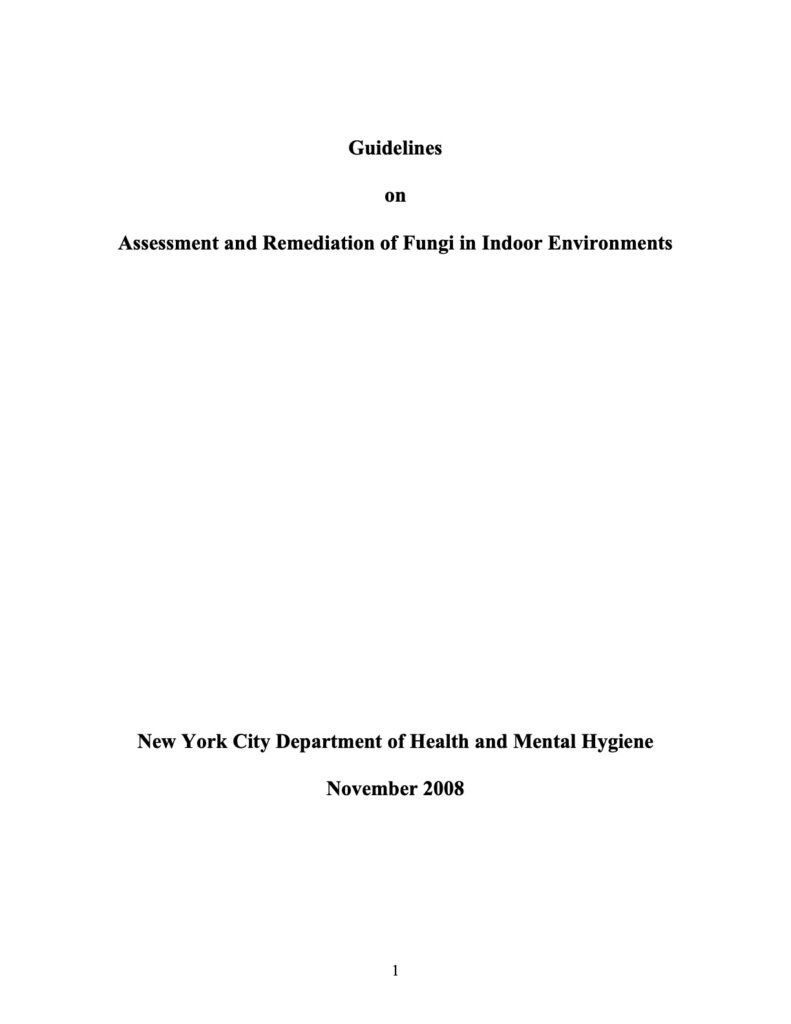Often referred to simply as the “New York City Guidelines,” the Guidelines on Assessment and Remediation of Fungi in Indoor Environments by the New York City Department of Health and Mental Hygiene are considered by many mold remediation professionals to be among the earliest and most widely-cited guidelines on proper mold remediation.
First released in 1993, the NYC Guidelines were later revised in 2000, with minor edits made in 2002. The latest iteration of the guidelines, discussed here, are from 2008.
The guidelines require:
■ That the “presence of mold growth, water damage, or musty odors should be addressed quickly. In all instances, any sources of water must be identified and corrected and the extent of water damage and any mold growth determined.”
■ That “water-damaged materials should be removed or cleaned and dried,” in alignment and with reference made to the EPA’s mold remediation guidelines, “Mold Remediation in Schools and Commercial Buildings.”
■ That visual inspections be done and include hidden areas of possible water damage, including “crawl spaces, attics, and behind wallboard.”
■ That carpet backing, carpet padding, ceiling tiles, paper-covered gypsum board (drywall), wallpaper, moldings, baseboards, insulation, and other materials suspected of hiding mold growth be assessed.
The guidelines further delineate the approach to mold remediation and removal depending on the size of the area affected, such as whether it is less than or more than 10 square-feet.
Like many later guidelines, the NYC Guidelines also state that mold in HVAC systems can pose serious and building-wide problems.


